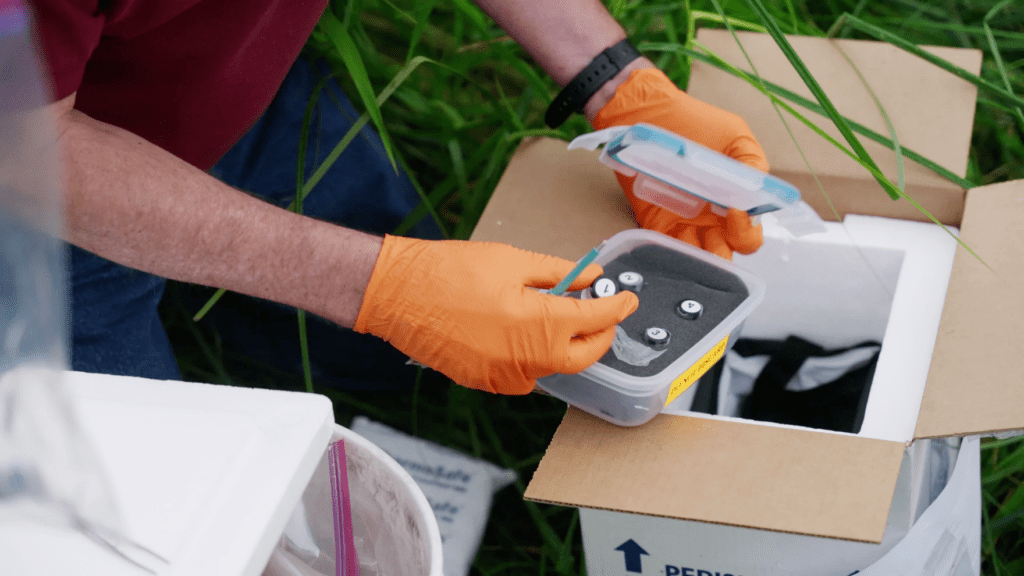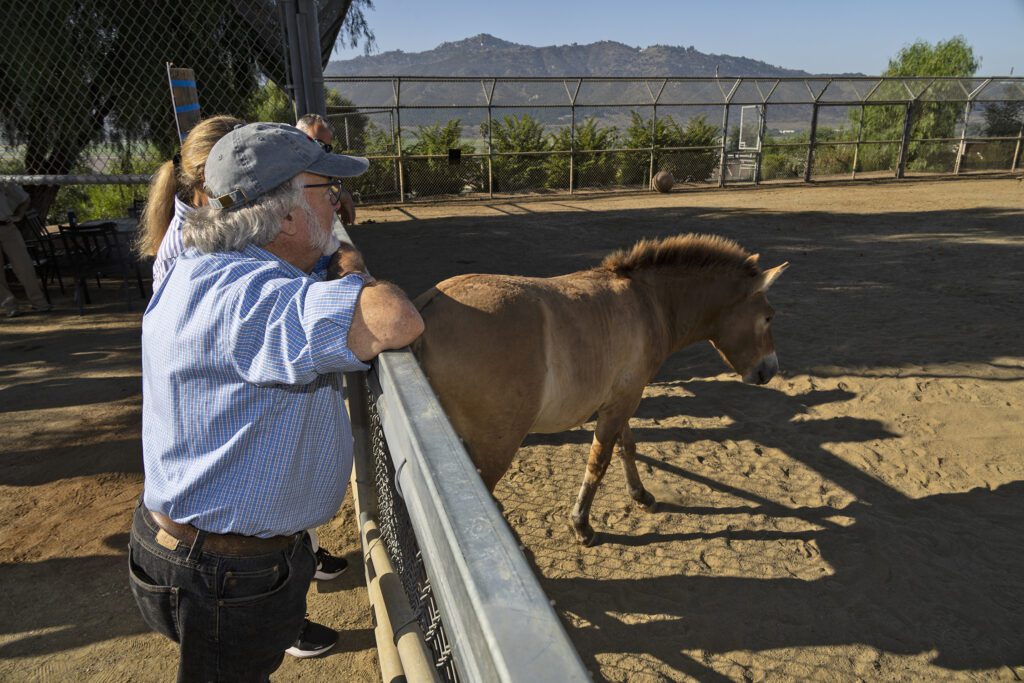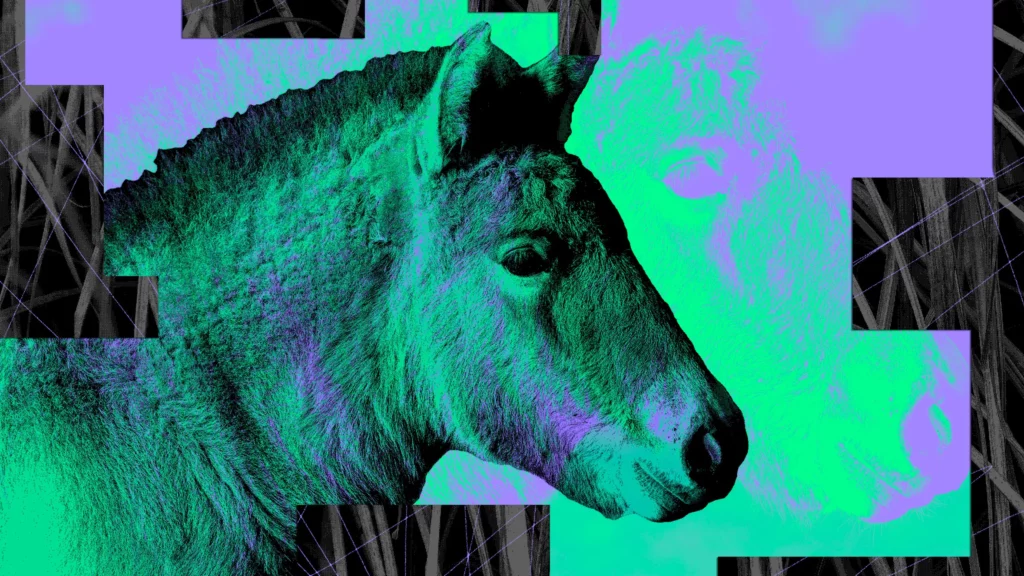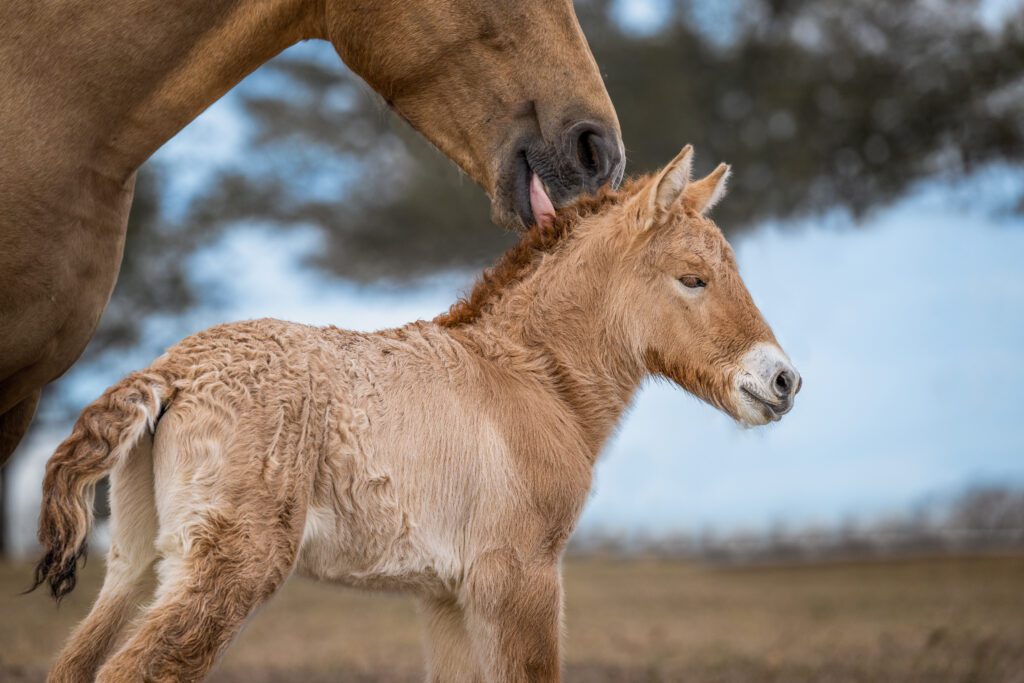Photo: 5-day-old Przewalski’s horse clone, named Ollie, at the ViaGen facility in Texas. Credit: Elizabeth Arellano Photography
The Przewalski’s Horse Project
The Przewalski’s horse (Equus przewalskii) is a critically endangered species that once ranged throughout Europe and Asia. Formerly extinct in the wild, today’s Przewalski’s horses are all descendants of just 12 individuals.
Since 2018, Revive & Restore and its partners have worked to restore genetic diversity in the Przewalski's horse through strategic conservation cloning.
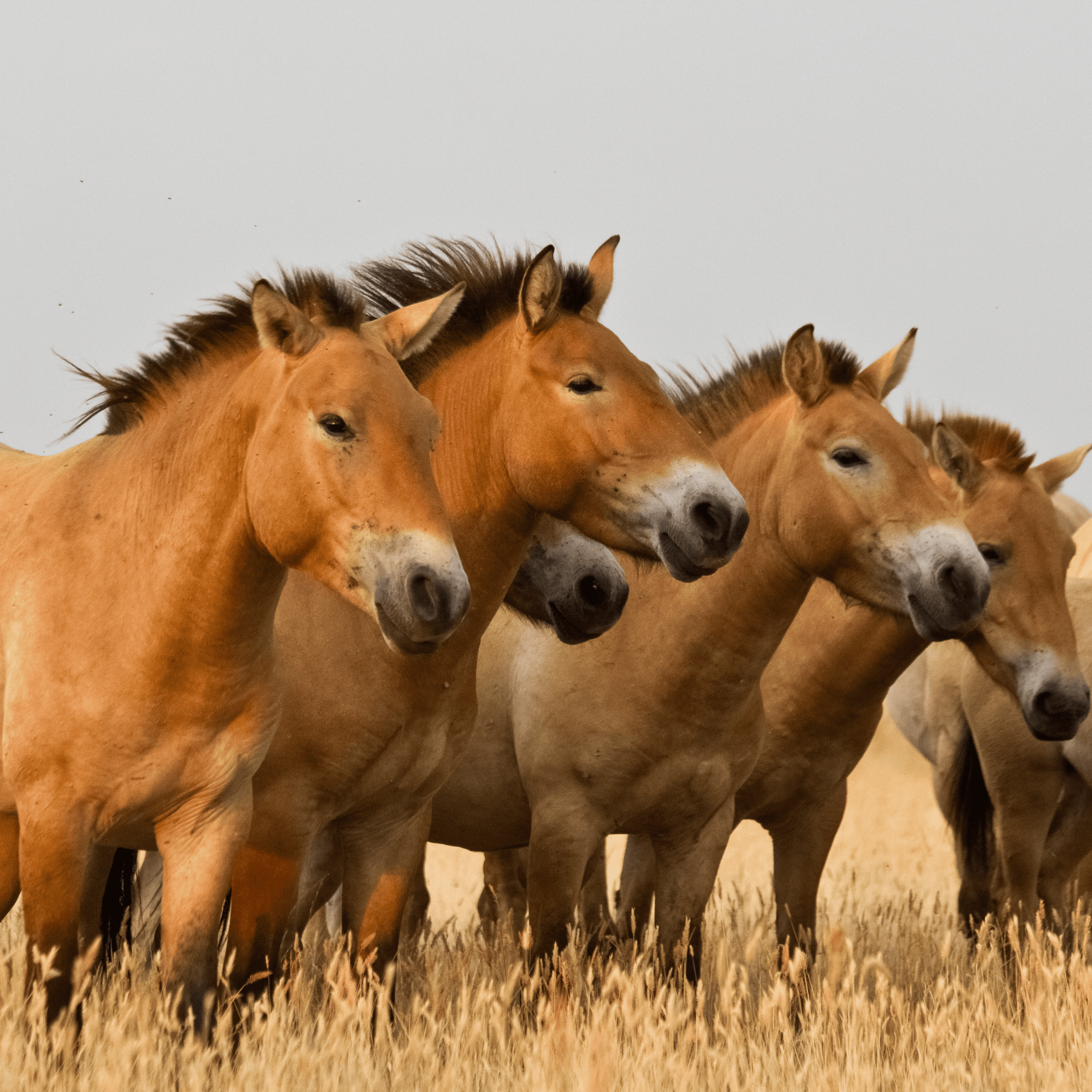
Reintroduced Przewalski’s horses (Equus przewalskii) in Mongolia | Shutterstock
Project news & updates
Filter
About the project
The Przewalski’s horse (pronounced “shuh-VAL-skees”) is the last truly wild horse species, diverging from the domestic horse over 500,000 years ago. Like many endangered species, the Przewalski’s horse is recovering from a severe historic bottleneck. All 2,000+ Przewalski’s horses today are descendants of just 12 individuals.
While ongoing reintroductions since the 1990s have established wild herds in China and Mongolia, restoring genetic variation is essential to ensure the species’ survival in the future.
In 2018, Revive & Restore, the San Diego Zoo Wildlife Alliance, and ViaGen Pets and Equine launched a collaboration to clone the world’s first Przewalski’s horse from a cell line that had been cryopreserved since 1980 at the San Diego Zoo Wildlife Alliance Frozen Zoo. The foal, named Kurt, was born on August 6, 2020 and carries precious genetic variation lost from the living gene pool.
On Feb. 17, 2023, a second cloned Przewalski’s horse was born from the same cell line. The foal, named “Ollie” in honor of Dr. Oliver Ryder, Director of Conservation Genetics at San Diego Zoo Wildlife Alliance, is Kurt’s genetic twin. Both Kurt and Ollie may become the first cloned animals to restore lost genetic variation to their species.
“It is an enormously hopeful, unprecedented step to have the capacity to restore genetic diversity. Kurt’s birth was a major milestone for Przewalski’s horse conservation. His success will serve as a model for saving endangered wildlife through the use of cloning.”
Oliver Ryder
Director of Conservation Genetics, San Diego Zoo Wildlife Alliance


